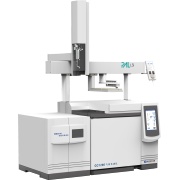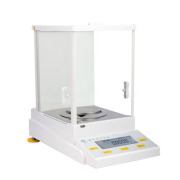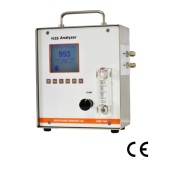RF-O2荧光光纤氧气测量仪由德国Pyroscience公司联合欧洲多国科学家研制生产,基于REDFLASH(RF)光学传感器技术,操作简单,无需维护。氧气测量仪由主机、传感器及软件组成,应用于环境科学、生态科学、植物科学、动物科学、海洋科学、生物医学、生物技术、食品科学等各个领域。在动物领域,RF-O2荧光光纤氧气测量仪广泛用于水生动物呼吸代谢及动物组织氧气含量的测定。
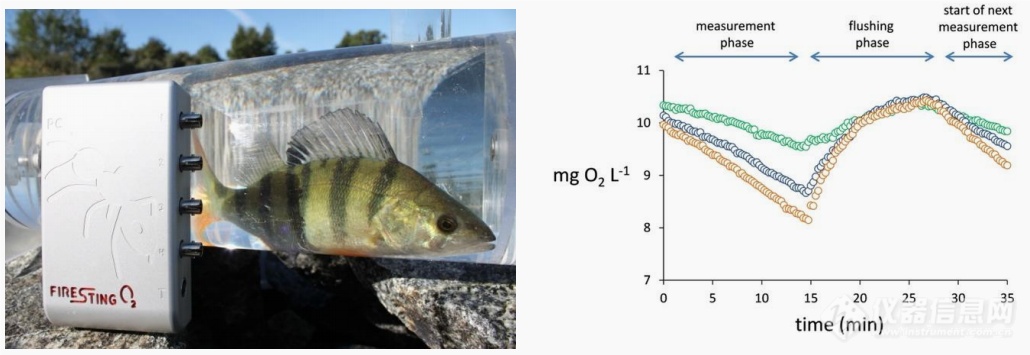
功能特点
l REDFLASH技术无氧耗、高速响应、低电耗、高精度、低交叉敏感性、低干扰
l 氧气传感器类型灵活多样,包括探头、探针、插入式、裸光纤、耐溶剂等接触式传感器以及薄膜贴、流通管、呼吸瓶等非接触传感器
l 氧气测量范围全量程和痕量可选
l 测量仪小巧紧凑、电脑USB供电,无需额外电源
l 氧气测量1、2、4通道可选
l 具备实时温度补偿
l 高时空解析度
l 气体、液体样品均可使用
l 具模拟输出和广播模式
l 配套分析软件具备耗氧率计算和漂移补偿的功能
l 即插即用
l 轻松校准
应用方向
l 鱼类的呼吸代谢测量
l 水生昆虫、底栖无脊椎动物等的呼吸代谢测量
l 动物组织、血液等氧气含量监测
技术指标
1) 新一代FireSting-O2(FS-O2)测量仪
a) 有1通道、2通道、4通道可供选配,分别可接1个、2个或4个氧气或温度传感器;另具备一个Pt100热电阻温度传感器通道
b) 最大采样频率:每秒10-20次
c) 内置气压传感器,300-1100mbar,0.06mbar分辨率,精确度±3mbar
d) 内置湿度传感器,0-100%RH,分辨率0.04%,精确度±0.2%
e) 具模拟输出和自动模式,0-2.5VDC
f) USB2.0接口,通过USB口PC供电,20mA@5VDC
g) 端口:串行接口UART
h) 大小:78x120x24mm,重290g
i) 操作环境:0-50℃,非冷凝
j) 软件:Pyro Workbench,Windows7/8/10,最低配置700MB硬盘、1GB内存、1360×768屏幕分辨率

2) 全量程氧气测量参数
最佳测量范围 0-50%O2(气相),0-22mg/L(溶解氧)
最大测量范围0-100%O2(气相),0-44mg/L(溶解氧)
检测极限:0.02%O2(气相),0.01mg/L(溶解氧)
适用温度范围:0-50℃
3) 痕量氧气传感器测量参数
最佳测量范围 0-10%O2(气相),0-4.5mg/L(溶解氧)
最大测量范围 0-21%O2(气相),0-9mg/L(溶解氧)
检测极限:0.005%O2(气相),0.002mg/L(溶解氧)
适用温度范围:0-50℃
4) 氧气校准胶囊:用于氧气传感器的零点校准。每个胶囊可制备50mL的校准溶液,10个装。
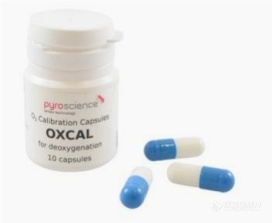
5) 配套数据采集和展示软件Pyro Workbench:支持多达10个Pyro的测量设备同时运行。软件提供设备的设置和传感器的校准。传感器读数能以数字和图表的形式展示,并能以相应数据文件存储,便于进一步的数据分析。 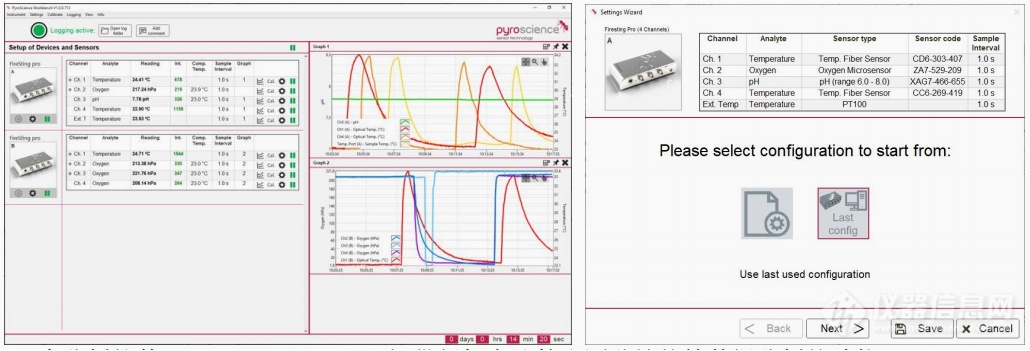
6) 配套分析软件Pyro Data Inspector:提供耗氧率计算和漂移补偿等数据分析的功能。
7) 传感器:类型多样,包括探头传感器、探针传感器、插入式传感器、裸光纤传感器、耐溶剂传感器、薄膜贴、流通管、呼吸瓶等。
应用案例
1. 澳大利亚珊瑚礁研究中心使用FSO2氧气测量仪测量了热带珊瑚礁鱼类在控温环境中的最大代谢率MMR、标准代谢率SMR及有氧代谢率AMR,研究结果发表在2016年的《Global Change Biology》杂志。
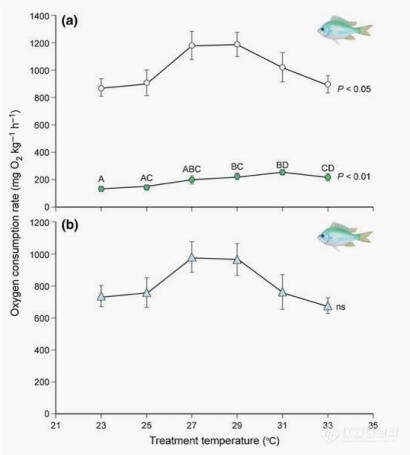
2. 来自澳大利亚海洋科学研究所和哥德堡大学的科学家对鲈鱼的耐热性的生理基础进行研究,分别对有氧呼吸代谢率和静脉血分压进行了测量。

3. 英国格拉斯哥大学的研究者使用FSO2四通道测量仪和探头式氧气传感器研究剧烈温度波动对鱼类代谢率和有氧代谢能力的影响。
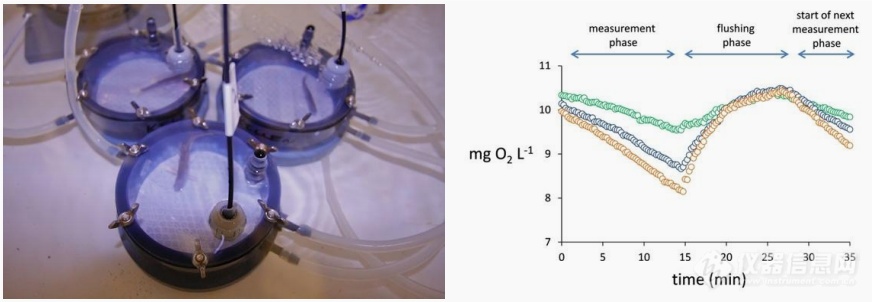
4. 美国伍兹霍尔海洋研究所的研究者使用FSO2四通道测量仪和薄膜贴式氧气传感器测量海洋无脊椎动物的耗氧率,他们使用注射器当做呼吸室,其体积可根据动物大小和代谢率灵活调整。
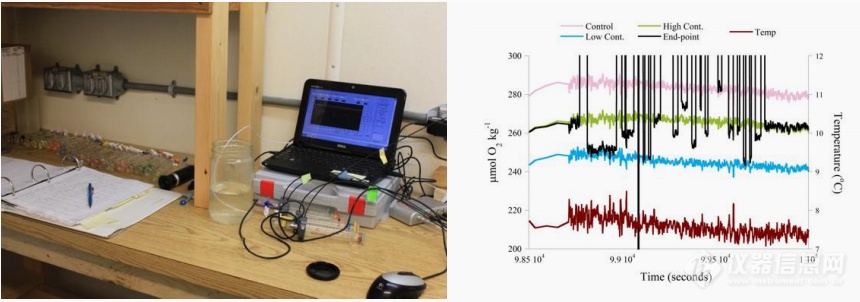
近年部分参考文献
l Beman, J. M. et al. Biogeochemistry and hydrography shape microbial community assembly and activity in the eastern tropical North Pacific Ocean oxygen minimum zone. Environmental Microbiology n/a,.
l Stadler, M., Ejarque, E. & Kainz, M. J. In-lake transformations of dissolved organic matter composition in a subalpine lake do not change its biodegradability. Limnology and Oceanography 65, 1554–1572 (2020).
l Shrestha, P. et al. Biodegradation testing of volatile hydrophobic chemicals in water-sediment systems – Experimental developments and challenges. Chemosphere 238, 124516 (2020).
l Michaud, A. B. et al. Glacial influence on the iron and sulfur cycles in Arctic fjord sediments (Svalbard). Geochimica et Cosmochimica Acta 280, 423–440 (2020).
l Hu, B. et al. Diurnal variations of greenhouse gases emissions from reclamation mariculture ponds. Estuarine, Coastal and Shelf Science 237, 106677 (2020).
l Graffam, M., Paulsen, R. & Volkenborn, N. Hydro-biogeochemical processes and nitrogen removal potential of a tidally influenced permeable reactive barrier behind a perforated marine bulkhead. Ecological Engineering 155, 105933 (2020).
l Gu, X.-B., Cai, H.-J., Du, Y.-D. & Li, Y.-N. Effects of film mulching and nitrogen fertilization on rhizosphere soil environment, root growth and nutrient uptake of winter oilseed rape in northwest China. Soil and Tillage Research 187, 194–203 (2019).
l Xia, D. et al. Role of sulphide reduction by magnesium hydroxide on the sediment of the eutrophic closed bay. Aquaculture Research 49, 462–470 (2018).
l Long, M. H. & Nicholson, D. P. Surface gas exchange determined from an aquatic eddy covariance floating platform. Limnology and Oceanography: Methods 16, 145–159 (2018).
l Boyko, V., Torfstein, A. & Kamyshny, A. Oxygen Consumption in Permeable and Cohesive Sediments of the Gulf of Aqaba. Aquat Geochem 24, 165–193 (2018).
l Habary, A., Johansen, J. L., Nay, T. J., Steffensen, J. F. & Rummer, J. L. Adapt, move or die – how will tropical coral reef fishes cope with ocean warming? Glob Change Biol 23, 566–577 (2017).
1年
否
有
1次
根据使用情况
1年
根据使用情况
相关产品
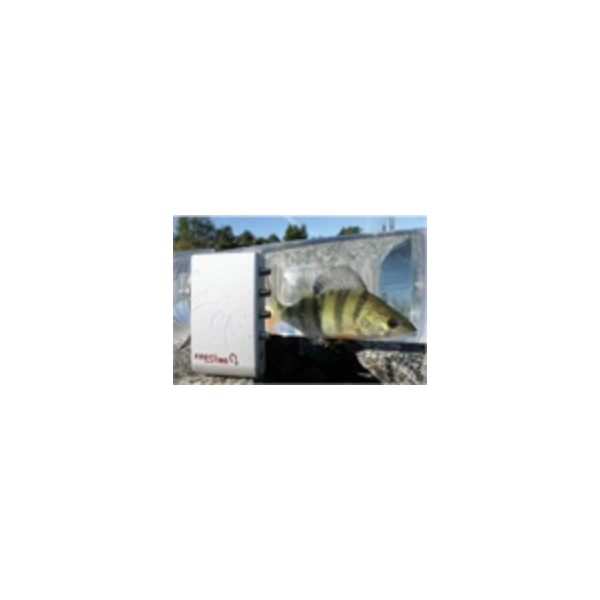


 仪器对比
仪器对比

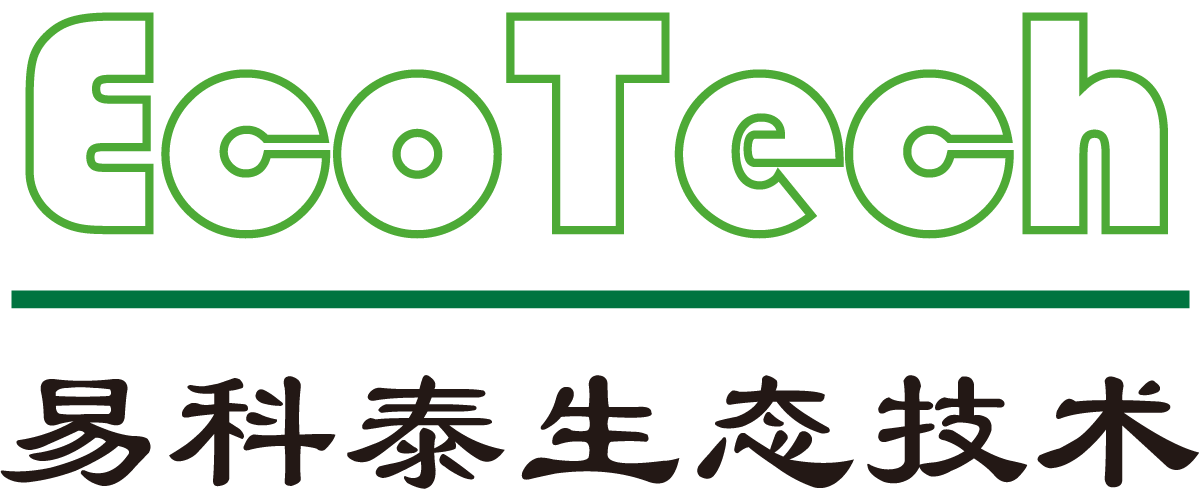

 关注
关注
